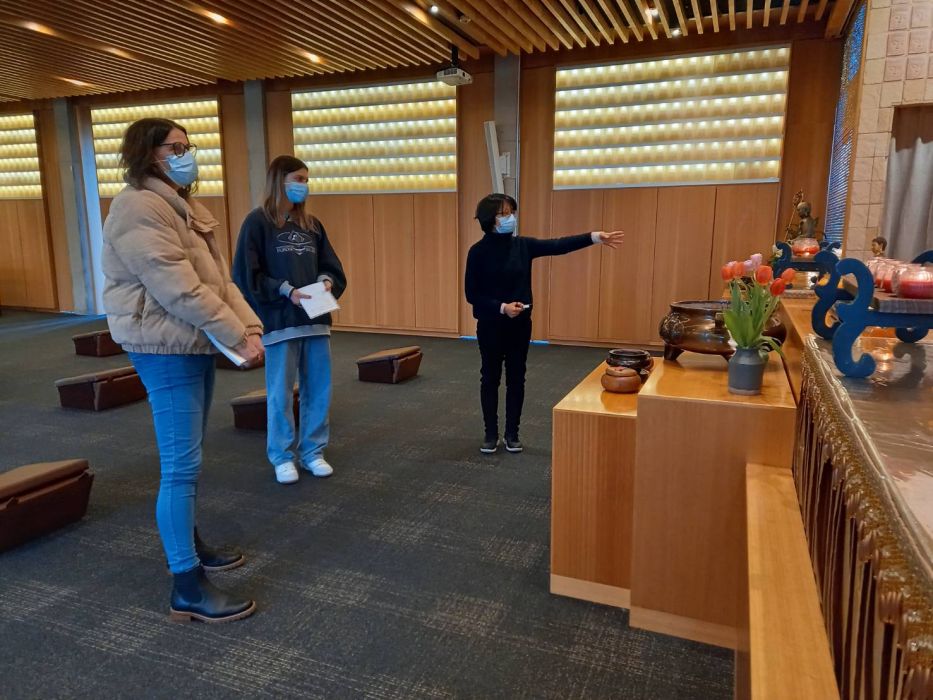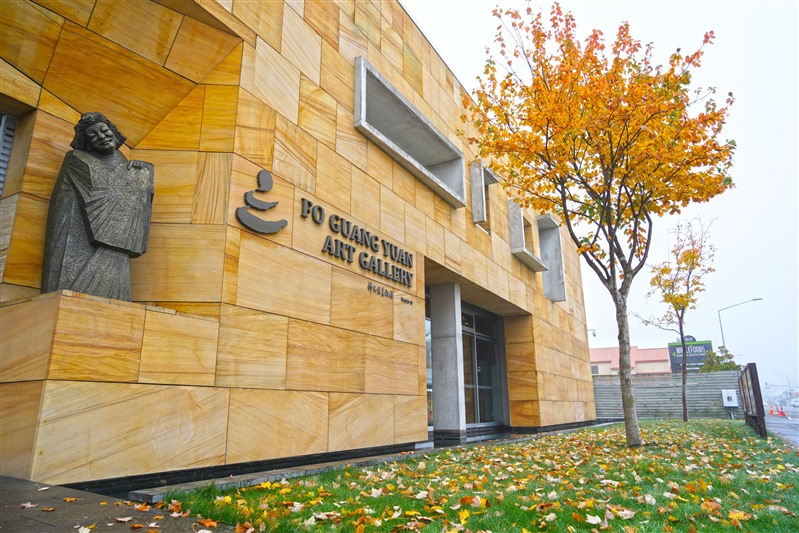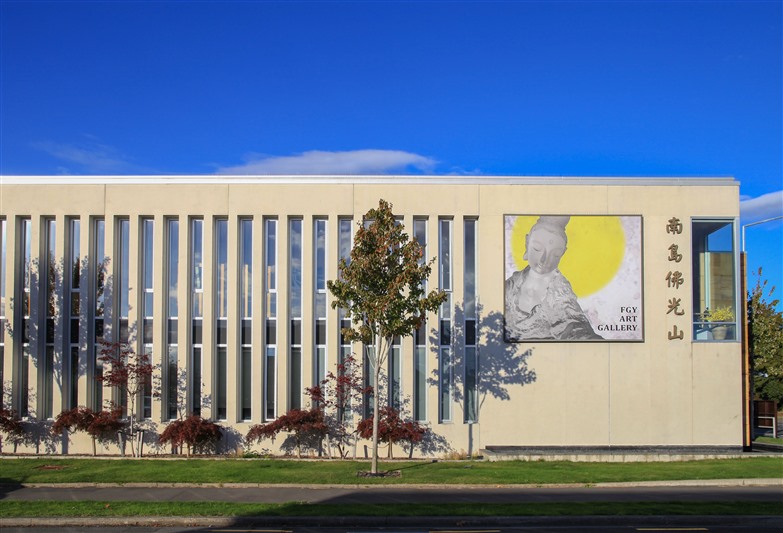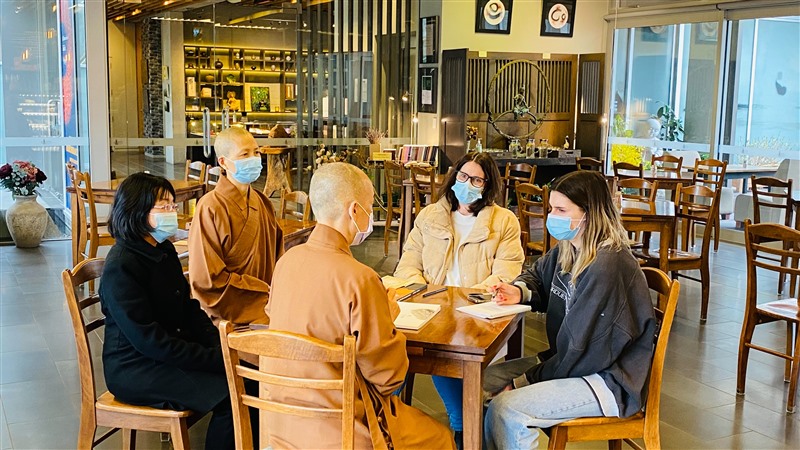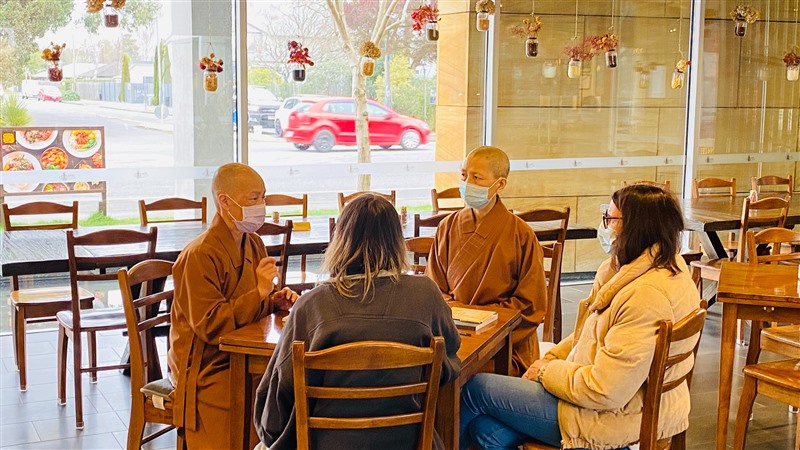Jemima Norris, a student of the Anthropology department at the University of Otago in New Zealand, visited Fo Guang Shan Christchurch on 30 July with her mother Anna to collect data for her research paper. She was researching the symbols and rituals of Buddhism for her paper on “Religion and the Supernatural.” Taking advantage of her winter break, she visited the temple to conduct an in-depth study of Buddhism. FGS New Zealand Abbess Venerable Manshin, FGS CHCH Minister in charge Venerable Juexi, and the BLIA members received Jemima and her mother during their visit to the temple.
BLIA member led Jemima and her mother on a tour of the temple, including the four Bodhisattva statues on the exterior walls of the building, the building materials used in the temple, the design of the Buddha Hall, the light and shadow of the Time corridor, the clear water and ink C’han painting in the courtyard, and the art exhibitions in the Art gallery.
Abbess explained to Jemima that Humanistic Buddhism embodies the Buddha’s teachings through the levels of “listening,” “contemplating,” “practicing,” and “realising.” One should not only listen to the correct teachings but also continuously contemplate the meaning of the teachings and confirm their knowledge through serving the public. The Fo Guang Shan Christchurch is a place of art, faith, spirituality and knowledge. The Water Drop café attracts people with its vegetarian food, and the art gallery purifies the heart with exquisite works of art. The temple holds many activities that benefit the community throughout the year, such as the “3G4G Festival of culture Sharing,” which attracts many New Zealand students to participate. Through interactive teaching, students can learn about the spirit of “Three Acts of Goodness and Four Givings,” purify their body, mind, and spirit, and receive the message of the goodness and beauty of Humanistic Buddhism.
During the interview, Jemima found the Abbess’s explanation very interesting and asked, “What is the core value of Buddhism?” Abbess said that it was to embody the “thoughts of a practitioner.” Fo Guang Shan’s Buddhism breaks away from traditional Buddhism and promotes Buddhism through art and culture. The temple building itself can preach the Dharma, with simple materials reflecting the heart directly and rough stone walls narrating the practitioner’s thoughts. Using building materials that are close to the essence of things brings people closer to Buddhism.
Abbess presented Jemima with books on the architectural philosophy of New Zealand Fo Guang Shan – “Way of Life” and the “2022 BLIA New Zealand Activity Report,” which increased her understanding of the temple’s construction and Fo Guang Shan New Zealand. Jemima expressed her gratitude to the temple for providing her with valuable information, which greatly assisted her paper. This trip not only deepened her understanding of Buddhism but also captured the beauty and peaceful atmosphere of the temple. She will visit again when she returns to Christchurch.

